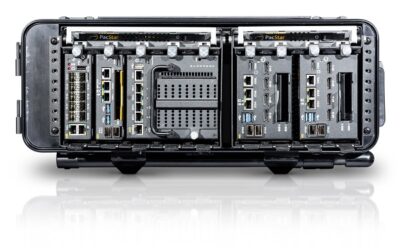Affordable Air & Missile Defense Sensor Solution
MONS Correspondent Marty Kauchak files this end-of-the-day report from the Space and Missile Defense (SMD) Symposium, Von Braun Center in Huntsville, Alabama.
Age and a rapidly evolving threat set are taking their toll on the US Army’s venerable but combat proven PATRIOT radar. Sustainment issues emerging in the three-decade old system and the quickening pace of current and future threats, will soon preclude the Army customer from efficiently and simply adding a software, or comparable “upgrade”, to the system. For its part, Lockheed Martin used this week’s Symposium to unveil its missile defence radar demonstrator – an active electronically scanned array (AESA) Radar for Engagement and Surveillance (ARES) – to stay in lock-step with the Army’s maturing requirement for a Low Tier Air & Missile Defense Sensor solution.
Mark Mekker, the company’s director of Ground Based Surveillance Radar, noted that while the Army’s requirements have not been fully articulated, his team used the ARES technology baseline as a stepping off point to, “focus on the technology building blocks of the radar system – the transmitter, receiver, signal processor, others.”
Peering into the future, Lockheed Martin also sought to mature that building block to needed performance levels, with the ability to scale the antenna size and other attributes based on final requirements – expected to be issued in the next 12-18 months. Mekker pointed out the AESA technology incorporates gallium nitride (GaN) transmitter technology and the benefits from this strategy including, “you can put out a lot more power and [do so] more efficiently, and achieve high performance levels.” The industry expert continued: “We’ve been working on GaN for ‘a few years’ – 10 or 15 – it’s a very mature technology now. And whereas the defense industry has not driven the demand for GaN it has been the commercial sector – the cell phone industry and others.”
Of interest, Lockheed Martin has an “open foundry” business model as it works with commercial foundries. As these suppliers incrementally mature their GaN technology in terms of power and other attributes every year or two, Lockheed Martin reaps the benefits – without having to invest in a GaN manufacturing capability. Mekker’s team is also bringing to bear cross-over technologies from other Lockheed Martin products – to permit it to deliver an affordable, Low Tier Air & Missile Defense Sensor solution quickly “to the fight.”
“In one instance the platform structure and motion control structure system which levels it, is taken directly from the AN/TPQ-53 radar system, which Lockheed Martin continues to deliver to its US Army customer. Inside the system, what we are using are algorithms from our ballistic missile detection radar systems – the AN/TPS-59 and our MEADS programme which ran for more than a decade. These proven algorithms can do 360-degree coverage and the tracking of the threats we are after,” Mekker added and concluded: “Dual-band technology is where we have landed for bringing forth this Low Tier Air & Missile Defense Sensor solution. What that gives us, is we can do both surveillance and fire control in a single radar at an affordable price. So, instead of populating all at C-band, we can reduce that with S-band technology (surveillance) and C-band technology (fire control).”

























